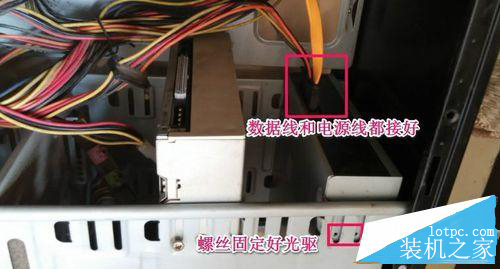手把手+零基础带你玩转单元测试,让你的代码更加“强壮”(核心API篇)
- JUnit 中的重要的 API
- Assert 类
- TestCase 类
- TestResult 类
- TestSuite 类
JUnit 中的重要的 API

JUnit 中的最重要的程序包是 junit.framework 它包含了所有的核心类。一些重要的类列示如下:
| 序号 | 类名 | 功能 |
|---|---|---|
| 1 | Assert | asssert方法的集合 |
| 2 | TestCase | 一个定义了运行多重测试的固定装置 |
| 3 | TestResult | TestResult集合了执行测试样例的所有结果 |
| 4 | TestSuite | TestSuite是测试的集合 |
Assert 类
下面介绍的是 org.junit.Assert 类:
public class Assert extends java.lang.Object
这个类提供了一系列的编写测试的有用的声明方法。只有失败的声明方法才会被记录。Assert 类的重要方法列式,如下:
| 序号 | 方法和描述 |
|---|---|
| 1 | void assertEquals(boolean expected, boolean actual) 检查两个变量或者等式是否平衡 |
| 2 | void assertFalse(boolean condition) 检查条件是假的 |
| 3 | void assertNotNull(Object object) 检查对象不是空的 |
| 4 | void assertNull(Object object) 检查对象是空的 |
| 5 | void assertTrue(boolean condition) 检查条件为真 |
| 6 | void fail() 在没有报告的情况下使测试不通过 |
下面让我们在例子中来测试一下上面提到的一些方法。
import org.junit.Test;
import static org.junit.Assert.*;
public class TestJunit1 {
@Test
public void testAdd() {//test dataint num= 5;String temp= null;String str= "Junit is working fine";//check for equalityassertEquals("Junit is working fine", str);//check for false conditionassertFalse(num > 6);//check for not null valueassertNotNull(str);}
}
运行测试套件键值处理模式
import org.junit.runner.JUnitCore;
import org.junit.runner.Result;
import org.junit.runner.notification.Failure;
public class TestRunner1 {
public static void main(String[] args) {Result result = JUnitCore.runClasses(TestJunit1.class);for (Failure failure : result.getFailures()) {System.out.println(failure.toString());}System.out.println(result.wasSuccessful());}
}
TestCase 类
下面介绍的是 org.junit.TestCaset 类:
public abstract class TestCase extends Assert implements Test
测试样例定义了运行多重测试的固定格式。TestCase 类的一些重要方法列式如下:
| 序号 | 方法和描述 |
|---|---|
| 1 | int countTestCases() 为被run(TestResult result) 执行的测试案例计数 |
| 2 | TestResult createResult() 创建一个默认的 TestResult 对象 |
| 3 | String getName() 获取 TestCase 的名称 |
| 4 | TestResult run() 一个运行这个测试的方便的方法,收集由TestResult 对象产生的结果 |
| 5 | void run(TestResult result) 在 TestResult 中运行测试案例并收集结果 |
| 6 | void setName(String name) 设置 TestCase 的名称 |
| 7 | void setUp() 创建固定装置,例如,打开一个网络连接 |
| 8 | void tearDown() 拆除固定装置,例如,关闭一个网络连接 |
| 9 | String toString() 返回测试案例的一个字符串表示 |
我们在例子中尝试一下上文提到的方法。
import junit.framework.TestCase;
import org.junit.Before;
import org.junit.Test;
public class TestJunit2 extends TestCase {
protected double fValue1;
protected double fValue2;@Beforepublic void setUp() {fValue1= 2.0;fValue2= 3.0;}@Testpublic void testAdd() {//count the number of test casesSystem.out.println("No of Test Case = "+ this.countTestCases());//test getNameString name= this.getName();System.out.println("Test Case Name = "+ name);//test setNamethis.setName("testNewAdd");String newName= this.getName();System.out.println("Updated Test Case Name = "+ newName);} //tearDown used to close the connection or clean up activitiespublic void tearDown( ) {}
}
接下来创建一个名为 TestRunner2.java 的类来执行测试案例。
import org.junit.runner.JUnitCore;
import org.junit.runner.Result;
import org.junit.runner.notification.Failure;
public class TestRunner2 {
public static void main(String[] args) {Result result = JUnitCore.runClasses(TestJunit2.class);for (Failure failure : result.getFailures()) {System.out.println(failure.toString());}System.out.println(result.wasSuccessful());}
}
检查输出结果。
No of Test Case = 1
Test Case Name = testAdd
Updated Test Case Name = testNewAdd
true
TestResult 类
下面定义的是 org.junit.TestResult 类:
public class TestResult extends Object
TestResult 类收集所有执行测试案例的结果。它是收集参数层面的一个实例。这个实验框架区分失败和错误。失败是可以预料的并且可以通过假设来检查。错误是不可预料的问题就像 ArrayIndexOutOfBoundsException。
TestResult 类的一些重要方法列式如下:
| 序号 | 方法和描述 |
|---|---|
| 1 | void addError(Test test, Throwable t) 在错误列表中加入一个错误 |
| 2 | void addFailure(Test test, AssertionFailedError t) 在失败列表中加入一个失败 |
| 3 | void endTest(Test test) 显示测试被编译的这个结果 |
| 4 | int errorCount() 获取被检测出错误的数量 |
| 5 | Enumeration errors() 返回错误的详细信息 |
| 6 | int failureCount() 获取被检测出的失败的数量 |
| 7 | void run(TestCase test) 运行 TestCase |
| 8 | void startTest(Test test) 声明一个测试即将开始 |
| 9 | void stop() 标明测试必须停止 |
| 10 | int runCount() 获得运行测试的数量 |
创建一个名为 TestJunit3.java 的类。
import org.junit.Test;
import junit.framework.AssertionFailedError;
import junit.framework.TestResult;
public class TestJunit3 extends TestResult {// add the errorpublic synchronized void addError(Test test, Throwable t) {super.addError((junit.framework.Test) test, t);}// add the failurepublic synchronized void addFailure(Test test,AssertionFailedError t) {super.addFailure((junit.framework.Test) test, t);}@Testpublic void testAdd() {// add any test}// Marks that the test run should stop.public synchronized void stop() {//stop the test here}
}
接下来,创建一个名为 TestRunner3.java 的类来执行测试案例
import org.junit.runner.JUnitCore;
import org.junit.runner.Result;
import org.junit.runner.notification.Failure;
public class TestRunner3 {
public static void main(String[] args) {Result result = JUnitCore.runClasses(TestJunit3.class);for (Failure failure : result.getFailures()) {System.out.println(failure.toString());}System.out.println(result.wasSuccessful());}
}
现在运行 Test Runner 它将运行在 Test Case 类中定义并提供的测试样例,true。
TestSuite 类
下面定义的是 org.junit.TestSuite 类:
public class TestSuite extends Object implements Test
TestSuite 类是测试的组成部分。它运行了很多的测试案例。TestSuite 类的一些重要方法列式如下:
| 序号 | 方法和描述 |
|---|---|
| 1 | void addTest(Test test) 在套中加入测试。 |
| 2 | void addTestSuite(Class<? extends TestCase> testClass) 将已经给定的类中的测试加到套中。 |
| 3 | int countTestCases() 对这个测试即将运行的测试案例进行计数。 |
| 4 | String getName() 返回套的名称。 |
| 5 | void run(TestResult result) 在 TestResult 中运行测试并收集结果。 |
| 6 | void setName(String name) 设置套的名称。 |
| 7 | Test testAt(int index) 在给定的目录中返回测试。 |
| 8 | int testCount() 返回套中测试的数量。 |
| 9 | static Test warning(String message) 返回会失败的测试并且记录警告信息。 |
创建一个名为 JunitTestSuite.java 的类。
import junit.framework.*;
public class JunitTestSuite {
public static void main(String[] a) {// add the test's in the suiteTestSuite suite = new TestSuite(TestJunit1.class, TestJunit2.class, TestJunit3.class );TestResult result = new TestResult();suite.run(result);System.out.println("Number of test cases = " + result.runCount());}
}
现在运行 Test Suite,检查输出结果。
No of Test Case = 1
Test Case Name = testAdd
Updated Test Case Name = testNewAdd
Number of test cases = 3




